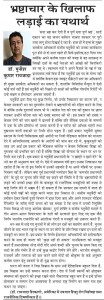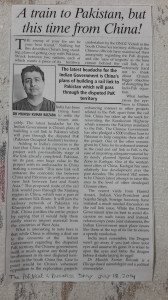August 25,2014: The Supreme Court today declared all coal block allotment done between the years 1993 to 2010 as ILLEGAL. It says coal block allocation was done in an arbitrary, unfair and non-objective manner. Though, it has stopped short of cancelling the allotments as the apex court says more hearing is needed into the case.
Thus, the roots of this mega-scam can be traced to NDA-led BJP also. It would be hard to believe if someone says that the Coal Ministry under the Prime Minister Shri A.B. Vajpayee did not know about the unfair means of continued or continuing allocations (a total of 70 coal blocks were given away from 1993- 2005, when BJP-led NDA was in power for a part of that duration). And later, Congress governemnt totally swept over the issue. Obviously, as Prime Minister and Coal Minister, Congress’ Man Mohan Singh owes a major responsibility for this scam ( he should have resigned as PM when the scam came to light during his resign, but he persisted). It seems, the coal had clouded the vision of all our parties and politicians during those years. It also shows that the beneficiaries of such scams and financial irregularities just play it low so that they continue to reap the benefit.
The coal scam is indicative of rampant and deep-rooted corruption and opaqueness in our systems of governance. As responsible citizens, let us not get divided over party lines. Who took the beating if politicians made the loot over coal blocks? We all- the hard working citizens of India!
To read more about the judgement of Supreme Court today on this matter, please click here.


